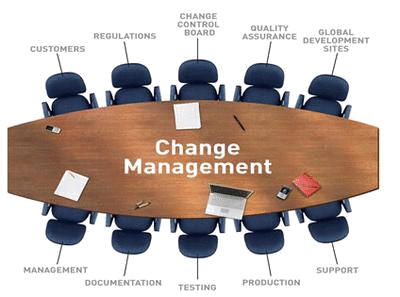ERP implementation best practices are something that each business or company must understand thoroughly to ensure the success of their implementation. While the process of implementing ERP might seem like child’s play, it is wiser to acknowledge the fact that it is not.
When you begin using these ERP implementation best practices, you will experience better results from day one. It is crucial to be very particular about each phase, from selecting the right team to signing the deal with a trusted vendor. Be very particular about all these practices, and relax while the software does most of the work for you.
In this blog, we will therefore highlight the best practices for ERP implementation and provide tips to mitigate any form of risks.
What is an ERP?
ERP stands for enterprise resource planning, and it refers to the process of planning, customizing, and deploying your ERP system. ERP implementation is the process of implementing ERP. It helps you manage the daily activities of your business and your data and provides you with fruitful insights into them.
ERP also analyses all your information and saves your time, resources, and all the extra effort that you would be using otherwise. If you carry out the entire process through the ERP implementation best practices, you will see good results flowing from it.

10 ERP Implementation Best Practices
Let us now discuss the best ERP implementation best practices to revolutionize business operations.
Choose the Right Project Team
The first of the ten ERP implementation best practices is putting together the right project team that can work wonders for you. This will be quite helpful in the success of the entire process of implementation. Such a team must have a project manager and an executive sponsor, who will ensure that all financial needs of the project are met.
Your project team will be crucial in laying down a roadmap for the entire process and ensuring its fruitful completion. It will look after all key issues and work as per the needs of your business. Therefore, you must include people based on their expertise in the required field and not seniority or personal preferences.
Clear Set of Needs and KPIs
As the next best practice for ERP implementation, your team must set out a clear plan of action for the entire process. Let’s say you go shopping in the market and have no prior plan for what you need. Will you be able to shop to the fullest? Probably not, and the same is true of ERP implementation.
You need to know the requirements of the project as well as your business. If you know what you need, you will be able to do much better. Understand what you want to achieve through this project and identify key performance indicators (KPIs) to know where the project is leading you.
Management of Project
Project management is one of the most important ERP implementation best practices that one should employ. The entire process takes a lot of time to show results, and therefore, you should have a plan that will guide the entire deployment. You must begin by aligning the project with the needs of your business.
Ensure that all members of the project team provide valuable input to the project and avoid adding extra customizations without the need. You may also try to understand your business in-depth so that you can make the software work as per your whims and fancies.
Collaboration and Communication
For your implementation process to be successful, there should be a mutual understanding between your employees regarding the objectives of the project. All individuals need to know why the project has been undertaken and what results it should bring about.
There should be a clear channel of communication and collaboration. This may be ensured through presentations, charts, graphs, or blog posts, so that all are updated. You may also schedule meetings to discuss progress and establish friendly relations. The basic idea is to keep everyone, from the CEO to the end-user, informed.
Choose the Right ERP Implementation Partner
You cannot choose just any random person and expect them to work as per your expectations. Therefore, before signing a deal, conduct thorough research about the partner/vendor yourself. Make sure that they have the required expertise as well as experience in the field to help your plans succeed.
Research and interview the vendor’s customer references and confirm that they comprehend the entire project well. Also, confirm if they will be able to provide adequate training and support once your software is fully deployed.
Collect End-User Feedback
If you want your ERP implementation best practices to be successful, you must keep gathering end-user feedback throughout the process. This data, although vague, is quite crucial for your project when compiled together. You will be able to understand the way your employees tackle daily problems and know if they are facing any issues with the software. Moreover, it will be the guiding light for the entire process by telling you how well the ERP is handling real problems.
Data Migration
Your data is the most important part of your business because it holds even the minuscule details about it. Data migration refers to the act of transferring your present business data to the new ERP software and is one of the essential ERP implementation best practices. This is inclusive of stuff like customer or supplier data, account history, and employee or product data, among others.
Create a Change Management Plan
The sixth of the ten ERP implementation best practices has two sides to it, which must be taken care of. As the first part, you must begin by planning out the plan of implementation in simple steps. Once you have a list of what has to be done and in what order, you should delegate the work to your team. Here are a set of factors you must consider:

- Predicting implementation costs and creating a budget
- Manifest an implementation schedule
- Data migration to the new system
- Good training for the ERP user base
- Testing the ERP and starting off
- Things to do when you start off
- Evaluating the success of the ERP project
Training
It is essential to train the end users in the domain of ERP because if they are not able to grasp the workings of the system, it will fail. You can train your employees, as part of the best practices for ERP implementation, in two ways:
In-person training: This form of training ensures that all employees attend the compulsory sessions you conduct; however, it becomes difficult to coordinate with such a large workforce.
E-learning: This form of training is easily customized and can be used to coordinate with a large workforce. However, encouraging employees to complete tasks quickly and efficiently becomes hard.
Each successful training program will have the following features, using which you can analyze its success:
- Role-based training.
- Feedback for employees and the implementation team.
- Clear communication channels.
Support
Once the ERP implementation best practices have been taken care of and the software has been deployed, you will need technical support to ensure its smooth functioning. You may set up help desk support as well as an online knowledge base or forum so that things seem understandable to everyone who comes in contact with it.
Ensure that your project team keeps a check on the possible problems or issues related to the deployment. If you know where the implementation is going wrong, you will be able to fix it faster. You may fix errors by training employees or the maintenance of software.
Tips for Preventing Extra Costs
While all of us create a budget before starting with the best practices for ERP implementation, there are often cases where it may run over budget. If you do not want to incur extra costs during the process, you should keep in mind some important points.
You should focus on the total cost of ownership or TCO. Begin by managing this and its benefits to reduce expenses and increase the return. This will have a big impact on your business. Do not force changes that are not needed. This will unnecessarily increase the implementation and operating costs.
You should also manage customer orders, update pricing, add new products and services, etc., and focus on the routine business processes that are important for the company. Do not over-customize the software in order to reduce costs.
In the end, we suggest that you use a secure cloud-based ERP solution and ensure that the vendor takes care of all the security that is needed for your system.
When is an ERP Implementation Complete?
When the ERP software has been deployed, you will need the flexibility to add extra features to it. Such a digital transformation will help you team up with your customers and suppliers and redefine how business is done. You may also use new technologies like artificial intelligence (AI), and integration with equipment and vehicles using Internet of Things technology. These will improve speed and efficiency. Once all this is taken care of, your ERP implementation best practices will be complete.
Conclusion
In this blog, we have covered the ERP implementation best practices that, if followed, can help the entire process turn out to be successful. However, you must ensure that you are choosing the correct ERP software for your business and are not worrying in a hurry. Most companies go for cloud-based ERP systems, following ERP implementation best practices, because they are easy to use and cost-effective.
You may analyze the ERP implementation best practices given above and choose which software will suit your needs. Remember to be sure of what you select, because the success of the entire process will depend on this choice.


























